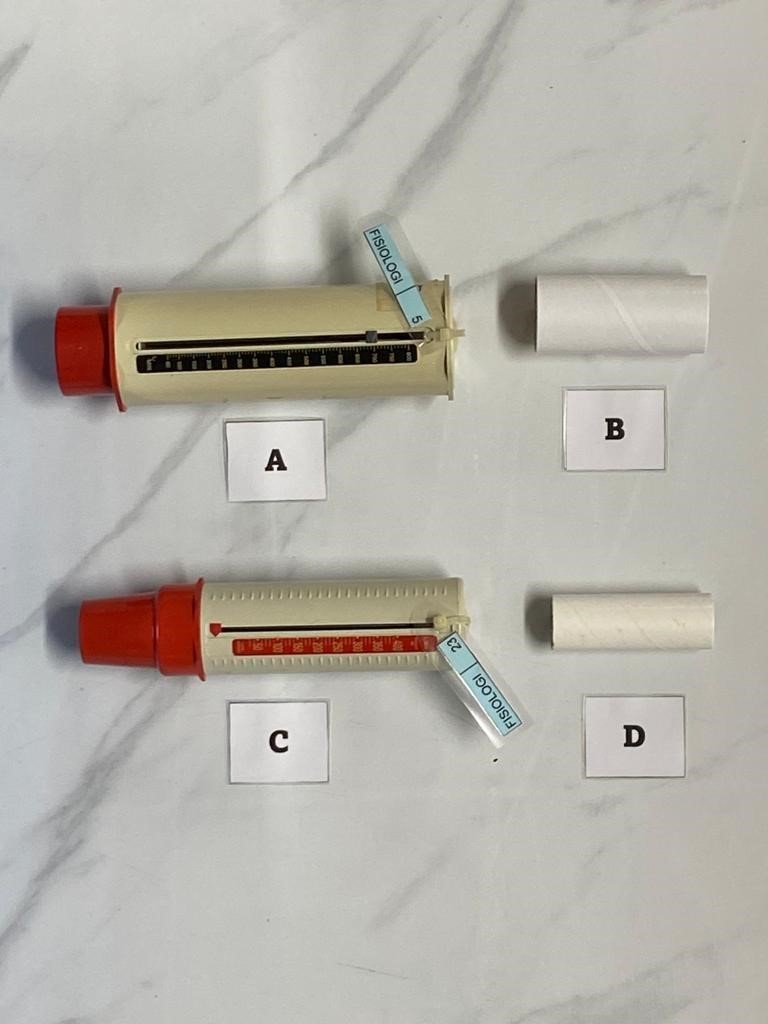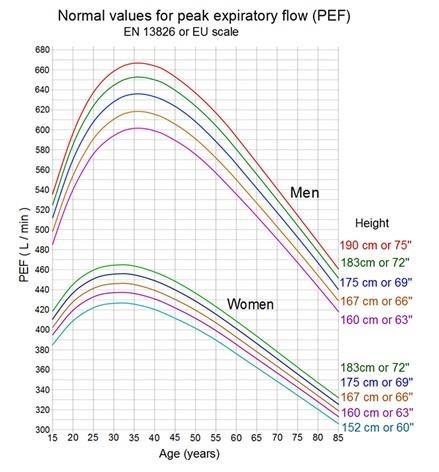MEASURING LUNG FUNCTION: PEAK EXPIRATORY FLOW METER
Peak expiratory flow meter measures the maximal flow rate that can be achieved during
forceful expiration following full inspiration. It measures the peak expiratory flow rate (PEFR)
that is typically measured in units of liters per minute (L/min).
1. Instruments
A: Peak expiratory flow meter (for adult)
B: Mouthpiece (for adult)
C: Peak expiratory flow meter (for children)
D: Mouthpiece (for children)

2. Indications
- To diagnose and monitor progress of obstructive airway disease
- To measure the degree of airway obstruction before and after bronchodilator administration (to monitor response to treatment)
3. Normal/ abnormal values
- Normal limits should be within 20% of predicted value or +/- 20%.
- Compare results with the predicted value using a chart (Nomogram).
- It is best to compare a patient’s PEFR to a previous “personal best”, if possible, rather than to an expected predicted value obtained from a nomogram.

4. How to use the instrument
The ideal posture is standing upright. However, it can also be performed sitting upright.
- Attach the mouthpiece to the peak expiratory flow meter.
- Explain the procedure to the patient.
- Make sure the sliding marker is set at zero.
- Hold the instrument horizontally.
- Your hand should not block the marker.
- Take a deep breath.
- Insert the mouthpiece and close lips tightly.
- Exhale with maximal effort.
- Do the test 3 times.
- Record the highest reading.
You can also watch the video from this link:
https://www.youtube.com/watch?v=jdA8KU_D9JU
DISCLAIMER: This video is for educational purpose only.
By:
DR. MD RIZMAN BIN MD LAZIN @ MD LAZIM
Medical Lecturer
Department of Physiology
School of Medical Sciences
Health Campus
Universiti Sains Malaysia.
Email: